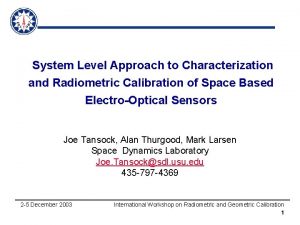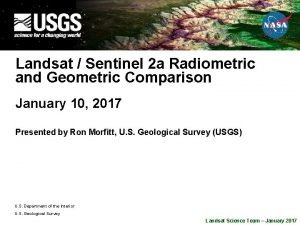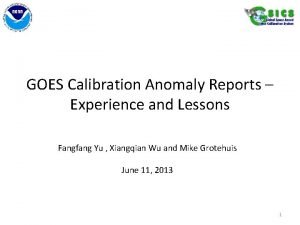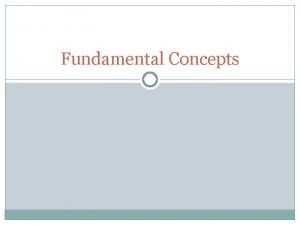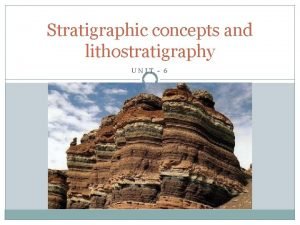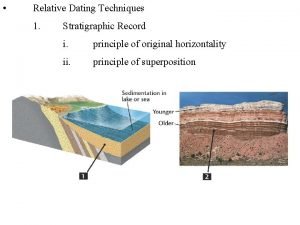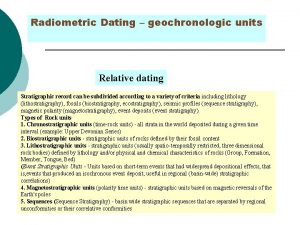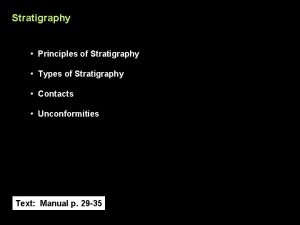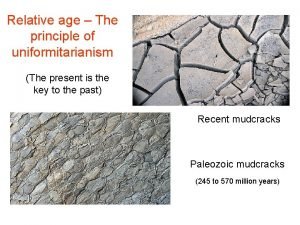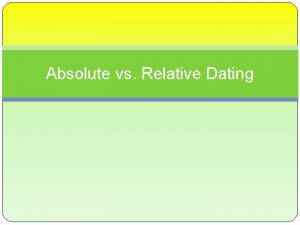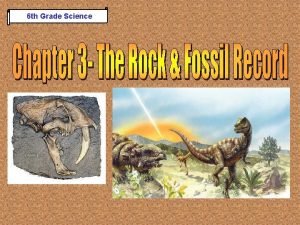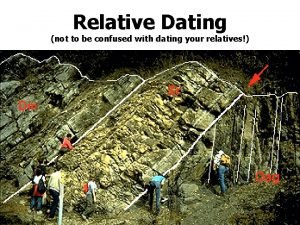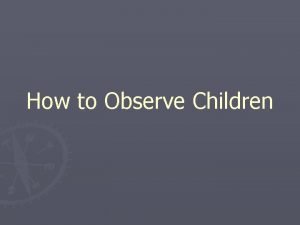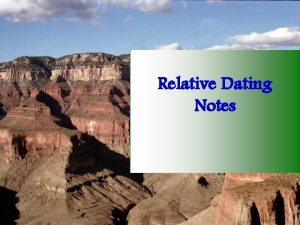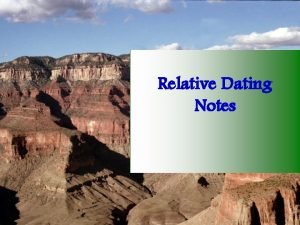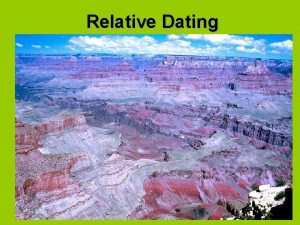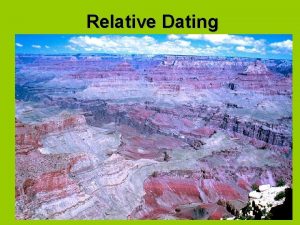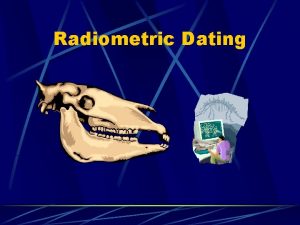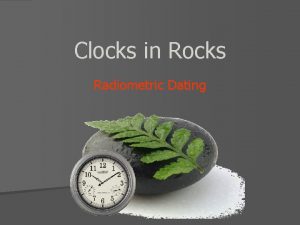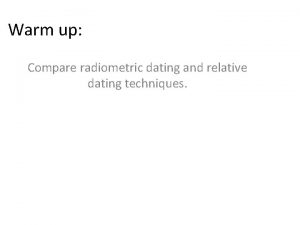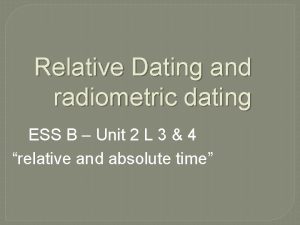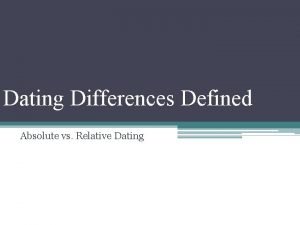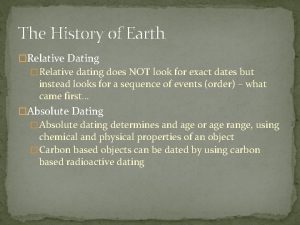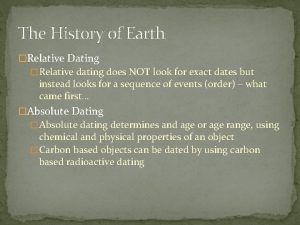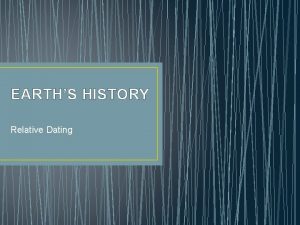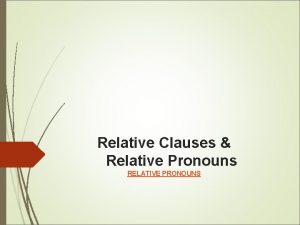Radiometric Dating geochronologic units Relative dating Stratigraphic record






















- Slides: 22

Radiometric Dating – geochronologic units Relative dating Stratigraphic record can be subdivided according to a variety of criteria including lithology (lithostratigraphy), fossils (biostratigraphy, ecostratigraphy), seismic profiles (sequence stratigraphy), magnetic polarity (magnetostratigraphy), event deposits (event stratigraphy). Types of Rock units 1. Chronostratigraphic units (time-rock units) - all strata in the world deposited during a given time interval (example: Upper Devonian Series) 2. Biostratigraphic units - stratigraphic units of rocks defined by their fossil content 3. Lithostratigraphic units - stratigraphic units (usually spatio-temporally restricted, three dimensional rock bodies) defined by lithology and/or physical and chemical characteristics of rocks (Group, Formation, Member, Tongue, Bed) (Event Stratigraphic Units - Units based on short-term events that had widespread depositional effects, that is, events that produced an isochronous event deposit; useful in regional (basin-wide) stratigraphic correlations) 4. Magnetostratigraphic units (polarity time units) - stratigraphic units based on magnetic reversals of the Earth's poles 5. Sequences (Sequence Stratigraphy) - basin wide stratigraphic sequences that are separated by regional unconformities or their correlative conformities


eon era perioda epocha věk chron


1. Lithostratigraphy a. description of unit properties (e. g. color, texture, particle shape, stratification, lithology) b. named after dominant grain size fraction c. hierarchy of lithostratigraphic units (1) group: consists of 2 or more formations (2) formation: a main unit that has considerable lateral extent (3) member: a named unit within a formation; names are geographical Biostratigraphic Zones Biozones - the most fundamental biostratigraphic units. A zone is a body of rock whose lower and upper boundaries are based on the ranges of one or more taxa


Bio-Events First appearances of new species ¡ First appearances of new higher taxa ¡ Extinctions of species ¡ Mass extinctions of multiple taxa ¡ Bio-events are unique points in geologic time ¡

Index Fossils Some fossils are more useful than others for relative age determinations ¡ Fossils that are most useful are called INDEX FOSSILS ¡ What factors would maximize a fossil’s usefulness? (i. e. , What makes a good index fossil? ) ¡

Index Fossils Guide Fossils (other terms used: Zone Fossil, Index Fossil) A good index fossil must be: 1. Independent of environment 2. Fast to evolve 3. Geographically widespread 4. Abundant 5. Readily preserved 6. Easily recognised Examples: Graptolites, Ammonites, Foraminiferans, Pollen, Nannoplankton

What makes a good index fossil? ¡ ¡ ¡ Distinctive appearance/easy to recognize Short duration between first appearance and extinction (a. k. a. RANGE) Widespread geographic distribution (makes correlation possible across a wide area/multiple continents)

Characteristics of Index Fossils Limited Stratigraphic Range ¡ Widespread Geographic Distribution ¡ Commonly Pelagic ¡ Or, tolerant of a wide variety of environments (found in many facies) ¡


Units of the Geological Time Scale Time-stratigraphic units- Geochronologic units – Erathem ¡ System ¡ Series ¡ Stage ¡ Zone (Biozone) Consist of rocks and fossils ¡ defined mainly on biostratigraphic criteria ¡ calibrated by radiometric dating Era ¡ Period ¡ Epoch ¡ Age ¡ Chron Consists of time intervals - years before present

Geological time scale Commission on Stratigraphy of the International Union of Geological Sciences ¡ Time-stratigraphic units defined by internationally agrees boundary stratotype sections ¡

Definition of the Time Scale ¡ Each unit’s base defined by a particular stratigraphic level at one type section l l ¡ ¡ ¡ Global Stratotype Section and Point (GSSP) the “Golden Spike” That stratigraphic level is marked by first or last appearance of one or more “index” taxa – base of a zone Other sedimentary rocks of that age determined by biostratigraphic (and other!) correlation with that type section Many time-rock units are still not formally defined


Requirements for a GSSP ¡ ¡ ¡ ¡ Continuous sedimentation. Completeness of exposure. Thick enough to work with. Abundant and diverse fossils. Favourable facies Structurally simple, no metamorphism, etc. No unconformities. Amenable to magnetostratigraphy/geochronometry

Index Fossils and International Stratotypes The Case of the Silurian – Devonian Boundary

Definition of the S-D Boundary ¡ Stratotype: Klonk, near Suchomasty, Czech Republic

S-D GSSP ¡ ¡ GSSP = Global Stratotype Section and Point First appearance of Monograptus uniformis Bed 20 Klonk, Czechia

Index Fossils and the Silurian - Devonian Boundary ¡ ¡ ¡ Graptolites * Conodonts * Chitinozoans * Trilobites Brachiopods Cephalopods

 Radiometric dating formula
Radiometric dating formula Radiometric calibration
Radiometric calibration Radiometric error
Radiometric error üspace
üspace Define radiometric resolution
Define radiometric resolution Tunisian stratigraphic chart
Tunisian stratigraphic chart Lithostratigraphy
Lithostratigraphy Chegg
Chegg Stratigraphic clause
Stratigraphic clause Paraconformity
Paraconformity Dating serves several important functions that include
Dating serves several important functions that include Relative age
Relative age Conformity
Conformity Relative dating
Relative dating Relative age of rocks diagram
Relative age of rocks diagram Geopuzzle
Geopuzzle Discomformities
Discomformities Youngest to oldest rock layers
Youngest to oldest rock layers Relative dating
Relative dating Relative dating
Relative dating Relative dating
Relative dating Anecdotal record vs running record
Anecdotal record vs running record Azzalure units
Azzalure units

